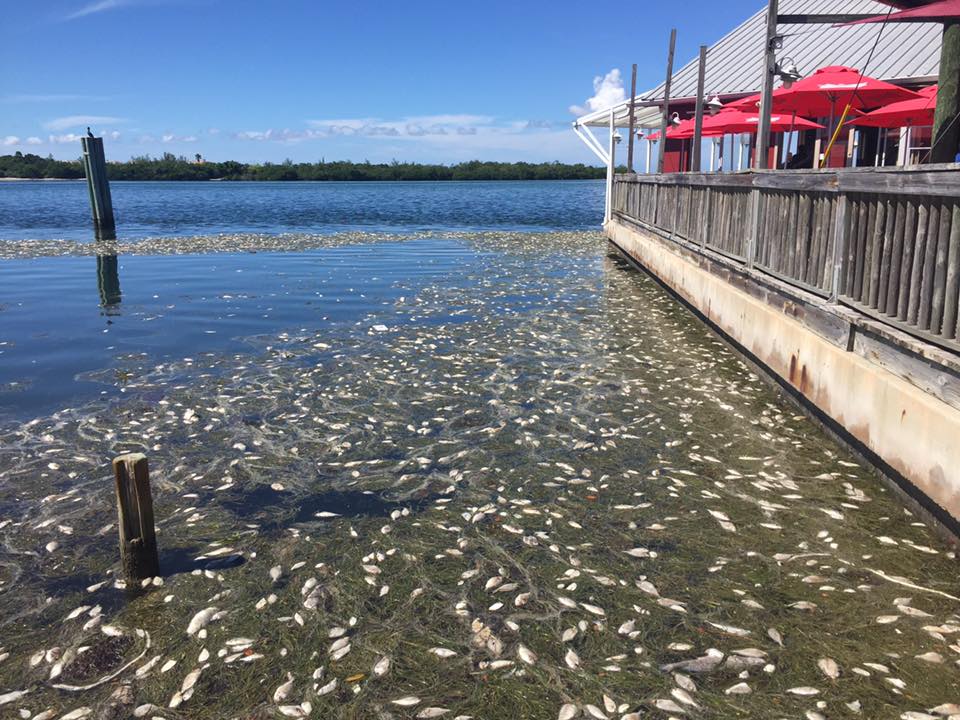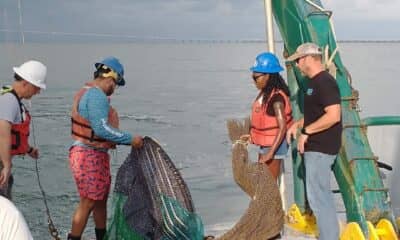Know
Pinellas County starts to tally the toll of red tide

NOTE: Pinellas County Economic Development reported an incorrect damage total on Sept. 26. This news story has been updated to reflect the correct numbers.
Forty Pinellas County businesses have reported estimated damages of $1.24 million as a result of the red tide impacting the gulf coast.
The damage estimates were compiled by Pinellas County Economic Development from companies that filled out an online disaster survey from the state through Sept. 25. It’s a much lower total than the amount initially reported by the economic development agency, which said on Oct. 1 that it had reported the numbers incorrectly.
Red tide — a higher-than-normal concentration of a microscopic algae — began impacting the Florida coast earlier this summer, causing massive fish kills and unpleasant sights and odors on the beaches. As of Wednesday, a bloom of red tide was about 135 miles along the coastline, from northern Pinellas to northern Collier counties, and extending offshore by 10 miles or more, the Florida Fish and Wildlife Conservation Commission said.
Pinellas county sampling on Wednesday showed high concentrations of red tide at Madeira Beach, Redington Beach and Indian Rocks Beach, and the Florida Fish and Wildlife commission reported that a large number of stingrays were reported dead in Boca Ciega Bay.
Details about the businesses that filled out the Pinellas damage survey were not available.
But businesses most likely to be impacted are those that operate in the water, such as fishing charter boats and marinas; those on the beach, including hotels, restaurants and bars; and retailers near the beach, including surf and souvenir shops, said Greg Kadet, managing director and market head for UBS Florida Gulf Coast Region. UBS is one of the largest private banks in the world, with institutional, corporate and individual clients.

Greg Kadet, Managing Director – Florida Gulf Coast Market,
UBS Global Wealth Management US
“It’s a cascading effect,” he said. “What we’re hearing is business is off anywhere from 20 percent to 50 percent, depending on where you are in that continuum. When you are on the beach or in the water and you are very focused on the revenue from tourism or leisure water sports, you are seeing a larger hit. Companies that are more diversified are seeing lower numbers.”
People who work hourly shifts in water sports and restaurant jobs are seeing their paychecks fall, but less obvious jobs also are being impacted, such as the drivers who bring supplies to beach retailers and the people who clean those stores and dining places, he said.
There’s also a potential real estate impact. People who own homes on the beach may be considering putting their property up for sale or scaling back on making them available for Airbnb or other rentals, Kadet said.
Beyond the immediate fallout, Kadet also is keeping his eye on longer-term effects.
“If people chose to cancel their vacation and book somewhere else, will they be repeat vacationers in the new spot or return to the west coast of Florida? I don’t know. We don’t have a crystal ball. We hope it is one and done and doesn’t come around for another 20 years. For the most part, that’s what’s happened in the past,” he said.
Red tide is one of just many disasters that can impact a business’ revenue stream, said Kadet, who focuses on contingency planning with clients. He outlined four steps businesses should take to prepare:
- Be prudent and conservative from the get-go
- Have short-term cash put aside that allows you to get through a minimum six months period of time
- Make sure you are insured for loss of income
- Have a credit facility to bridge a period of time of reduced revenue, allowing the business to pay for products and services, rent and employees’ wages
“For business owners, regardless of where you are in the cycle, if you haven’t planned, let this be the spot where you start,” Kadet said.
Businesses affected by the red tide bloom can apply for U.S. Small Business Administration economic injury disaster loans. These are working capital loans intended to help small businesses in meeting their financial obligations through the disaster recovery period. The loans have terms of up to 30 years and a maximum interest rate of 3.385 percent. Applications are available online and companies also can visit the SBA Business Recovery Center for Pinellas County at the St. Petersburg College EpiCenter at 13805 58th St. N. in Clearwater.
Gov. Scott also has activated the Florida Small Business Emergency Bridge Loan program, a short-term, interest-free loan program that provides up to $50,000 per eligible business.
More details about that are available here.
As of Oct. 1, 45 Pinellas County businesses completed the Florida Damage Assessment and reported their estimated damages at $1.5 million, Pinellas County Economic Development said. Statewide, the combined red tide impact for the nine counties affected is $129.5 million, as self-reported by 225 businesses, according to the county agency.







